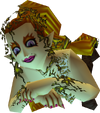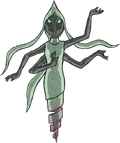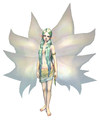Dragons of the Fairies
Down by the lake, over there,
look at the air down at the edge of the water.
Where what appears to be like tiny flies
flying around the lilies there.
They appear to be like little dragonflies.
They appear to scurry to and fro with purpose.
As I am drawn for closer inspection,
I realise that indeed,
these are no ordinary dragon flies.
These have wings of crimson
with tiny jaws that open and hiss at me,
and will someday be blowing smoke.
Let it be known to those who know not.
The fairy dragons they are called by some,
dancing on the lilies.
As they sing as they dance,
and take nourishment from droplets of dew
from the leaves of forest trees,
and the sweet nectar of the flowers;
and can be friendly and gentle
and even let the fairies ride upon them.
They are also well known by the elves
as the elves also ride them and
keep them as pets,
and make them their own homes to live in.
They like to sing and dance and it never fails,
what ever song they sing,
it is a delight for all in the village.
But don't get too merry, be warned!
Once the dragons have grown,
They will leave to explore new land.
But please do not be too distraught,
for the baby dragons will be back.
They will be back when air warms again,
and the darkness of winter relents
to the golden rays of the warming spring sun.
Cynthia©













